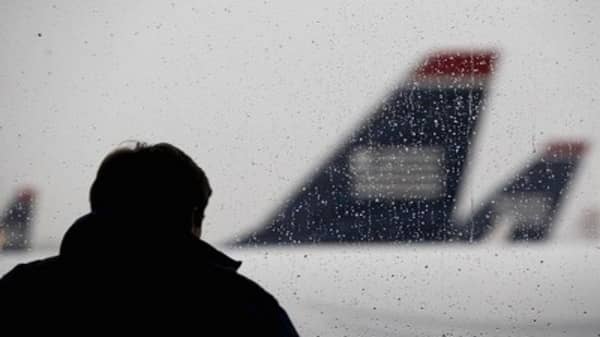Announcing widespread cancellations and a waiver of change fees, U.S. airlines hunkered down Monday for a round of lost revenues as the season's worst winter storm bore down on the Northeast.
But unlike last winter's serial storm snarls, most carriers will more than make up for those losses thanks to lower fuel prices.
A wave of cancellations began rolling through the system Sunday night, as thousands of flights were put on hold after forecasts of as much as 3 feet of snow from northern Virginia into New England and Atlantic Canada.
As of Monday afternoon, more than 2,800 flights had been canceled or delayed, according to the flight tracking site FlightAware.
Read MoreStuck in the blizzard? Tricks to rebook your flight
Most major airlines are allowing customers whose flights are canceled in the next few days to book new flights without paying a penalty. The National Weather Service predicts 2 to 3 feet of snow for a 250-mile stretch of the Northeast, including the New York and Boston areas. Philadelphia should get 14 to 18 inches. The storm was expected to continue through Wednesday.
While major hubs like New York's John F. Kennedy, Newark and LaGuardia airports and Boston's Logan remained open, they warned of limited service.
Those cancellations are expected to produce bottlenecks that ripple throughout the national air traffic system. Because a large portion of the industry's capacity is concentrated in high traffic hubs in the Northeast, major delays there can slow the entire system as crews and equipment become stranded and unable to move in or out of the region.





